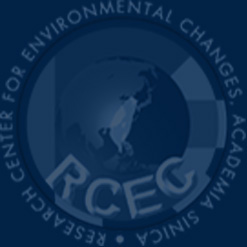

Wu, Chau-Ron吳朝榮
CEO & Research Fellow
Research Interests
Atmosphere-ocean processes in seas around Taiwan, including the South China Sea, the East China Sea, the Taiwan Strait and the Kuroshio, are complicated, dynamic, and cross-disciplinary. They involve both physical and bio-geochemical interactions. The inter-relationships among these processes and their evolution with global warming severely impact the livelihood of humankind. Using a suite of satellite remote sensing data, ARGO profiling drifters, in situ measurements, and numerical model simulations, I make long-term dedication to this cross-disciplinary field. My research, varying from small-scale coastal and regional modeling to basin-scale marine climate processes, has been seen as significant advances in (1) ocean dynamics, (2) numerical modeling, (3) climate variability, and (4) atmosphere-ocean processes. My achievements are fruitful and have improved the knowledge of the ocean dynamics and variability in the western North Pacific Ocean.
Representative Publications
Chang, Y.-C., C.-R. Wu* (corresponding author), P. C. Chu, Y.-L. Wang, L. R. Centurioni, G.-Y. Chen, and R.-S. Tseng (2025): Underestimated Kuroshio power and its potential sites off southeast Taiwan. Applied Energy, Accepted. [SCI; IF:10.1]
Wang, Y.-L.*, F.-F. Jin, C.-R. Wu*, and B. Qiu (2024): Northwestern Pacific oceanic circulation shaped by ENSO. Scientific Reports, 14, 11684, doi:10.1038/s41598-024-62361-z. [SCI; IF:4.6]
Wu, C.-R.*, Y.-F. Lin, I-I Lin, and J.-Y. Yu (2023): Unleashing the power of the sun: The increasing impact of the solar cycle on off-season super typhoons since the 1990s. npj Climate and Atmospheric Science, 6, 166, doi:10.1038/s41612-023-00495-z. [SCI; IF:9.448]
Wang, Y.-L. and C.-R. Wu* (2022): Rapid surface warming of the Pacific Asian marginal seas since the late 1990s. Journal of Geophysical Research: Oceans, 127(12), e2022JC018744, doi:10.1029/2022JC018744. [SCI; IF:3.6]
Wang, L.-C., Y.-F. Lin, and C.-R. Wu* (2022): Intensified modulation of the Pacific north equatorial current bifurcation by the southern annular mode since the early 1990s. Scientific Reports, 12, 21210, doi:10.1038/s41598-022-25661-w. [SCI; IF:4.6]
Huang, P.-W., Y.-F. Lin, and C.-R. Wu* (2021): Impact of the southern annular mode on extreme changes in Indian rainfall during the early 1990s. Scientific Reports, 11, 2798, doi:10.1038/s41598-021-82558-w. [SCI; IF:4.380]
Wang, Y.-L. and C.-R. Wu* (2020): Nonstationary El Niño teleconnection on the post-summer upwelling off Vietnam. Scientific Reports, 10, 13319, doi:10.1038/s41598-020-70147-2. [SCI; IF:4.380]
Wu, C.-R.*, Y.-F. Lin, Y.-L. Wang, N. Keenlyside, and J.-Y. Yu (2019): An Atlantic-driven rapid circulation change in the North Pacific Ocean during the late 1990s. Scientific Reports, 9, 14411, doi:10.1038/s41598-019-51076-1. [SCI; IF:3.998]
Wu, C.-R.*, L.-C. Wang, Y.-L. Wang, Y.-F. Lin, T.-L. Chiang, and Y.-C. Hsin (2019): Coherent response of Vietnam and Sumatra-Java upwellings to cross-equatorial winds. Scientific Reports, 9, 3650, doi:10.1038/s41598-019-40246-w. [SCI; IF:3.998]
Wu, C.-R.*, Y.-L. Wang, and S.-Y. Chao (2019): Disassociation of the Kuroshio Current with the Pacific Decadal Oscillation since 1999. Remote Sensing, 11(3), 276, doi:10.3390/rs11030276. [SCI; IF:4.509]
Wang, Y.-L., and C.-R. Wu* (2019): Enhanced warming and intensification of the Kuroshio Extension, 1999-2013. Remote Sensing, 11(1), 101, doi:10.3390/rs11010101. [SCI; IF:4.509]
Wu, C.-R.*, Y.-F. Lin, and B. Qiu (2019): Impact of the Atlantic Multidecadal Oscillation on the Pacific North Equatorial Current bifurcation. Scientific Reports, 9, 2162, doi:10.1038/s41598-019-38479-w. [SCI; IF:3.998]
Lin, Y.-F., and C.-R. Wu* (2019): Distinct impacts of the 1997–98 and 2015–16 extreme El Niños on Japanese eel larval catch. Scientific Reports, 9, 1384, doi:10.1038/s41598-018-37569-5. [SCI; IF:3.998]
Highlights
The results of our observational analyses and climate model experiments suggest that the solar cycle, global warming and the ocean-atmosphere interaction may have a particularly strong influence on the occurrence of super typhoons. Every 11 years, the sun's magnetic poles change their polarity, and the Earth gains more momentum, heating up the tropopause, which causes the Hadley Cell and northeast trade winds to weaken. Atmospheric condition such as global warming strengthen the connection between subtropical and tropical zones, which increases the relationship between the solar cycle and the formation of typhoons. And the ocean-atmosphere interaction heats up the Northeastern Pacific and that warmth reaches the central Pacific, which reduces the Walker circulation and results in deep ocean circulations moving east. Such interaction also weakens the vertical wind shear in a way that facilitates the formation of off-season typhoons.
The profound influence from the North Atlantic on the Tropical Pacific has been a primary focus. We conducted observational analyses and numerical modeling experiments to show that the North Atlantic has also strongly influenced the Extratropical North Pacific. A rapid and synchronous change in the atmospheric and oceanic circulations was observed in the North Pacific during the late 1990s. The change was driven by the transbasin influence from the Atlantic. During the positive AMO phase since the 1990s, the anomalously warm North Atlantic triggers a series of zonally symmetric and asymmetric transbasin teleconnections involving the ITCZ (Intertropical Convergence Zone), Walker and Hadley circulations, and Rossby wave propagation that lead to a decrease in wind stress curls over the Pacific subtropics, resulting in an abrupt weakening in the North Pacific subtropical gyre and Kuroshio.
The Japanese eels migrate long distances and spawn to the south of the salinity front in the NEC during new moon periods. It has been reported the salinity front has extended farther south, which has shifted the eel’s spawning grounds to a lower latitude, resulting in smaller eel catches in 1983, 1992, and 1998. We demonstrated interannual variability in the eel catch is strongly correlated with the combination mode (C-mode), but not with ENSO. The spawning grounds accompanied by the salinity front extend farther south during the C-mode of climate variability, and eel larvae fail to join the nursery in the NEC, resulting in poor recruitment in East Asia. The C-mode is a previously neglected mode of climate variability generated by the nonlinear interaction between ENSO and the annual cycle in the western Pacific warm pool. Furthermore, we propose an appropriate SST index to project the eel catch in East Asian countries.